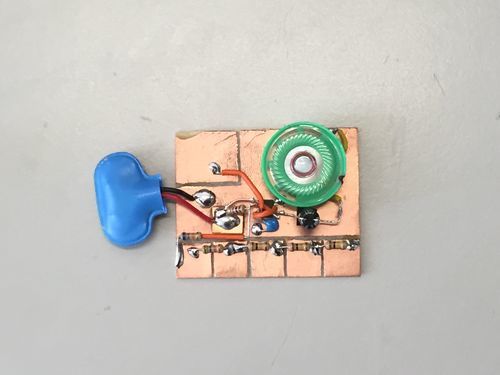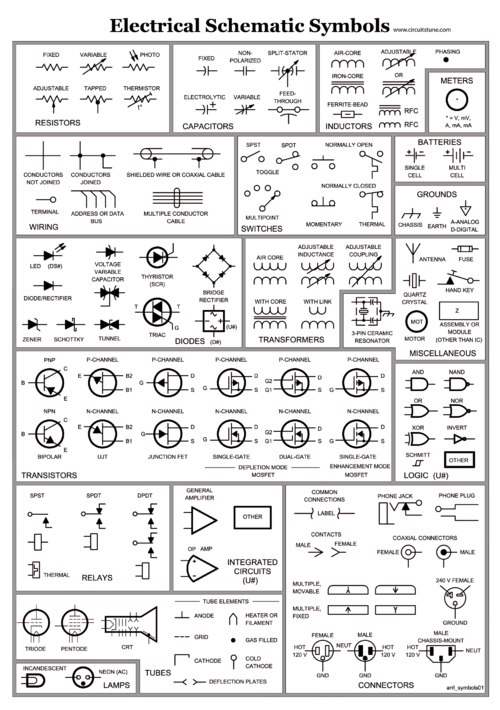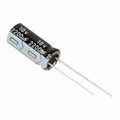Difference between revisions of "PracticalTheExpandedToolbox/Lab3"
Dennisdebel (talk | contribs) |
Dennisdebel (talk | contribs) |
||
| Line 142: | Line 142: | ||
== Schematics == | == Schematics == | ||
| + | |||
| + | Schematics are a (semi)standardised* way of representing an electric circuit, using the standard symbols you received earlier. This abstract way of representing a schematic does not limit the way you construct your circuit, be it dead-bug style, on a PCB, volumetric, on a piece of cardboard or coaster. Try to collect all the components from the BOM, figure out what symbol stands for what physical component and be aware of the orientation/polarity and pin numbers on the IC (hint read the datasheet)! | ||
| + | |||
| + | *Andrew S. Tanenbaum — 'The good thing about standards is that there are so many to choose from.' | ||
| + | |||
== Stencils == | == Stencils == | ||
== Soldering == | == Soldering == | ||
Revision as of 20:26, 17 May 2017
Contents
Introduction
Circuits can be made in many different ways:
- prototype board (e.g. perfboard or stripboard)[5]
- volumetric circuits[6][7]
- Etching a Printed Circuit Board (PCB)[8][9].
There are still other ways of making circuits, for example using the vinyl cutter to cut copper traces, using conductive fabric, etc. A nice overview of other alternative methods you can find at the great website of KobaKant: How To Get What You Want. Besides a lot of other interesting stuff (browse through it!!) the traces making sections you can find here: Kobakant section on Traces.
It is even possible to (almost) entirely knit your circuit: The Knitted Radio, Drapery FM.
In this lab you will be making a circuit with your preferred method with exception of the breadboard. The circuit presented here is a touch sensitive noise making circuit.
Symbols
During first class you received a leaflet with symbols used schematics of electronic circuits and their meaning. You will need this to decipher the schematic below. Here you find a copy of an american version (notice the resistor symbols):
Datasheets
All electronic components come with a datasheet. This is like the service manual of the component. For example IC's or Integrated Circuits are (complex) electronics circuits build into a tiny (often black) package. The datasheet will reveal the function of these 'black boxes'. Among others, datasheets can tell you:
- Specs: how much voltage does this component need? how much current does it draw?
- Pin-out's: where to connect what to?
- Example applications: example schematics for different functions/uses of the chip
- Footprint: measurements for making schematics etc, how big is the physical object?
The datasheet for the '555' IC we will be using can be found here: Media:Na555.pdf
Components
There are two main types of component mounting: DIP[10] (also known as through hole) and SMD[11].
- DIP or through hole components have legs you stick through holes in the PCB. You solder the legs to the bottom (copper) side of the PCB. Harder and harder to find now everything gets made by machines.
- SMD components have legs you solder on top of the PCB. Hence you do not need to drill any holes. This method of mounting components is the standard way these days as components can be much smaller and fabrication is cheaper (less drilling and plating of holes). Many more advanced components only come in SMD packages so it is a valuable skill to be able to work with and solder these components. However, as SMD components are usually meant to be mounted by machines, some are difficult or too small to handle with human hands, so when looking for components be sure to carefully check which package you select. A good overview of package types, sizes and names can be found on Wikipedia: https://en.wikipedia.org/wiki/Surface-mount_technology#Packages For machines, by machines.
In this Lab we will mix both!
NE555 (IC)
The NE555, or commonly known as '555 timer' is a very versatile chip or 'IC'. An 'IC' or Integrated Circuit is a (complex) electronic circuit build into a tiny (often black) package. It can be used to create sound (like in this Lab), blink lights, fade lights, turn things on for a short or long time many more. Many things you would want to use e.g. an Arduino for can be solved by this little chip alone or in combination some other circuits resulting in a much smaller and cheaper solution!
The 555 timer chip, like many other chips come in a variety of packages. The most common for this chip are DIP and SOIC. We will use the SOIC version in this lab.
Resistor (R)
The resistors we will use have 4 bands. Three coloured ones and a Gold one. The colours can be used to find out what the value of the resistor is, the Gold band signifies the 'tolerance', the percentage of variety in resistance amongst individual components. Gold is 5% tolerance, Silver is 10%. Here is a nice online calculator to find out the color or values of resistors: https://www.digikey.com/en/resources/conversion-calculators/conversion-calculator-resistor-color-code-4-band
Capacitor (C)
Capacitors come in different kinds but work in the same way: they act as 'buckets' and release the electrons when the bucket is full. They consists of a conductor and insulator called a dielectric. The type of dielectric determains the type of capacitor (and the amount of electrons it can hold). Main types of capacitors are air-capacitors, or egg-cutters (low capacity) used in old radios as tuning capacitors. Ceramic capacitors, also of low capacitance, unpolarized just like resistors. Electrolytic capacitors, polarized, large capacity ;) These various types also come in all shapes and sizes.
Ceramic capacitors don't have polarity, Electrolytic (or 'elco' in Dutch slang) do have a + and - side (polarity;)
BOM
BOM or Bill Of Materials is common engineering language for list of components you need to build something. Our current BOM:
| Component | Label on schematic and board layout | Value | Has polarity (does the part orientation matter?) |
|---|---|---|---|
| U1 | 555 | NE555 | Yes |
| Resistor | R1 | 1k | No |
| Resistor | R2 | 68k | No |
| Resistor | R3 | 56k | No |
| Resistor | R4, R5 | 100k | No |
| Speaker | SP1 | 8 Ohms | No |
| Capacitor | C1 | 100nF (nano Fahrad) | No |
| Capacitor | C3 | 1uF (micro Fahrad) | Yes |
| 9V Battery Clip | VCC1 | - | Yes |
Schematics
Schematics are a (semi)standardised* way of representing an electric circuit, using the standard symbols you received earlier. This abstract way of representing a schematic does not limit the way you construct your circuit, be it dead-bug style, on a PCB, volumetric, on a piece of cardboard or coaster. Try to collect all the components from the BOM, figure out what symbol stands for what physical component and be aware of the orientation/polarity and pin numbers on the IC (hint read the datasheet)!
- Andrew S. Tanenbaum — 'The good thing about standards is that there are so many to choose from.'
Stencils
Soldering
Assignment
- Form duo's
- Collect all the parts of the BOM (get a helping hand)
- Download the NE555 datasheet, read it.
- Choose a schematic
- Choose a desired method to make the circuit and make it (work)!
- Watch the polarity of components! Prevent short circuits, 'solder bridges', good luck!
Don't hesitate to try out different resistor values!
Demo of example board: https://www.youtube.com/watch?v=sOlpj5MdCnk
References
- ↑ Parallax breadboard tutorial
- ↑ Solar Sound Module by Ralf Schreiber
- ↑ Wire wrapping
- ↑ [1]
- ↑ https://en.wikipedia.org/wiki/Perfboard
- ↑ Some examples on Volumetric circuits
- ↑ Peter Vogel, The sound of shadows
- ↑ several etching techniques
- ↑ PCB making, Toner transfer method
- ↑ https://en.wikipedia.org/wiki/Dual_in-line_package
- ↑ https://en.wikipedia.org/wiki/Surface-mount_technology






